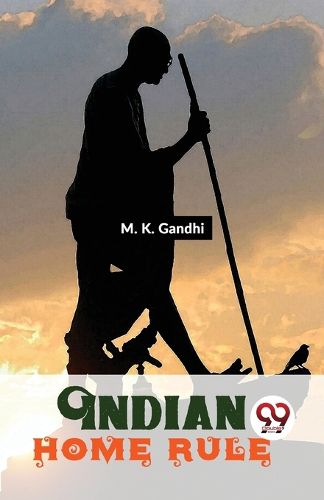Readings Newsletter
Become a Readings Member to make your shopping experience even easier.
Sign in or sign up for free!
You’re not far away from qualifying for FREE standard shipping within Australia
You’ve qualified for FREE standard shipping within Australia
The cart is loading…






This title is printed to order. This book may have been self-published. If so, we cannot guarantee the quality of the content. In the main most books will have gone through the editing process however some may not. We therefore suggest that you be aware of this before ordering this book. If in doubt check either the author or publisher’s details as we are unable to accept any returns unless they are faulty. Please contact us if you have any questions.
Mohandas Karamchand Gandhi, commonly known as Mahatma Gandhi, authored the book "Indian Home Rule" in 1909. Gandhi outlines his goals for Indian freedom from British colonialism and self-rule in the book. Gandhi believes that civil disobedience and nonviolent resistance are the only effective ways for Indians to change the unfair and oppressive nature of British rule over their country. In his opinion, India's independence is not just a moral need but also a political one. Gandhi also touches on the need of eschewing Western consumerism and the necessity of achieving economic self-sufficiency. Gandhi explains his well-known Satyagraha philosophy, which is founded on nonviolent resistance and peaceful protest, in the book. He emphasizes the significance of utilizing moral pressure rather than physical pressure to bring about social and political change. Global human rights groups, particularly the American human Rights Movement headed by Martin Luther King Jr., were influenced by Gandhi's beliefs on nonviolent resistance. "Indian Home Rule" serves as a potent rallying cry for Indian independence and self-government. It outlines Gandhi's plan for making India a free, independent, and peaceful country and outlines how to get there via nonviolent resistance and civil disobedience.
$9.00 standard shipping within Australia
FREE standard shipping within Australia for orders over $100.00
Express & International shipping calculated at checkout
This title is printed to order. This book may have been self-published. If so, we cannot guarantee the quality of the content. In the main most books will have gone through the editing process however some may not. We therefore suggest that you be aware of this before ordering this book. If in doubt check either the author or publisher’s details as we are unable to accept any returns unless they are faulty. Please contact us if you have any questions.
Mohandas Karamchand Gandhi, commonly known as Mahatma Gandhi, authored the book "Indian Home Rule" in 1909. Gandhi outlines his goals for Indian freedom from British colonialism and self-rule in the book. Gandhi believes that civil disobedience and nonviolent resistance are the only effective ways for Indians to change the unfair and oppressive nature of British rule over their country. In his opinion, India's independence is not just a moral need but also a political one. Gandhi also touches on the need of eschewing Western consumerism and the necessity of achieving economic self-sufficiency. Gandhi explains his well-known Satyagraha philosophy, which is founded on nonviolent resistance and peaceful protest, in the book. He emphasizes the significance of utilizing moral pressure rather than physical pressure to bring about social and political change. Global human rights groups, particularly the American human Rights Movement headed by Martin Luther King Jr., were influenced by Gandhi's beliefs on nonviolent resistance. "Indian Home Rule" serves as a potent rallying cry for Indian independence and self-government. It outlines Gandhi's plan for making India a free, independent, and peaceful country and outlines how to get there via nonviolent resistance and civil disobedience.